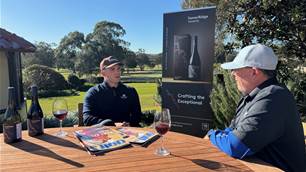The conditions at the US Open prove that if there is a God of golf, then said deity plainly has no control over the weather.
One of the great laments of modern golf is how the equipment-related distance explosion has narrowed the number of great courses that the big tournaments can go to. That’s why it’s always a special case when an undisputed classic comes around on the Major schedule.
Merion, which will host the US Open beginning tomorrow, is one such classic. The course, in the outer suburbs of Philadelphia, is imprinted across the history of golf: the place where Bobby Jones completed the Grand Slam of 1930, the site of Ben Hogan’s comeback victory in 1950, the Nicklaus-Trevino “snake” play-off of 1971. But since David Graham won the US Open at Merion in 1981, with his famed “perfect” final round, the top pro golfers have not played there.
This three-decade absence is something of an indictment of modern golf technology. Merion is a notably short course, on a small parcel of land, by contemporary standards – at less than 6,400m long, this will be the shortest course since Shinnecock Hills in 2004. Much of the pre-tournament commentary has dwelt on whether Merion could present the typically stern test of golf that the US Open presents.
Then there’s the weather. A modest-length course needs dry conditions to be at its best – when the grounds are softened by rain, the ball will stop where it lands, and tour players don’t need to exercise such fine control of their shots. And the Philadelphia area has been pounded by rain all week. The tournament officials of the US Golf Association have said that Merion drains as well as any course they’ve seen – here’s hoping their optimism is well-founded. Golf fans will remember that 2004 Open at Shinnecock turned into the modern example of disastrous course set-up. Merion deserves to avoid that fate.
Related Articles
Australia tied for second after two rounds of Eisenhower Trophy

New Release: Motocaddy launches direct to Australian Golfers













